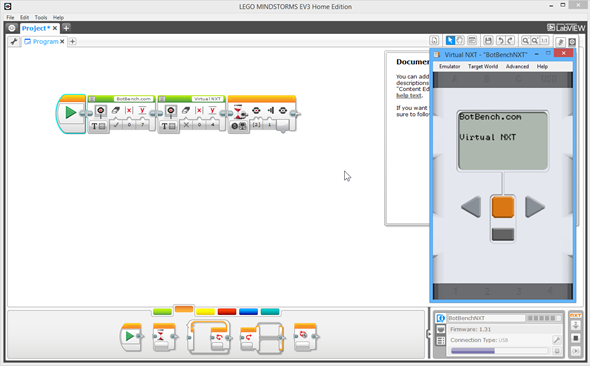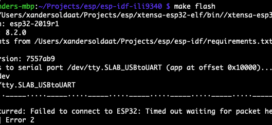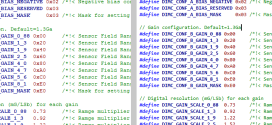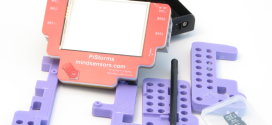 Robotics is great but if you have a lot of kids that want to take part, you’re going to need a fairly large number of sets. You don’t want to have spend the first 15 minutes of each class rebuilding the base robot for the lessons of that day. Up until now, you could use the ROBOTC Virtual Worlds, which requires you to use ROBOTC. Sometimes that’s not practical, especially when you’re dealing with fairly young kids that may not be ready for a written programming language. Perhaps you want to use LabVIEW instead. Well, choosing those languages used to mean foregoing the use of a virtual robot. This has all changed with the release of Robomatter’s Virtual NXT.
Robotics is great but if you have a lot of kids that want to take part, you’re going to need a fairly large number of sets. You don’t want to have spend the first 15 minutes of each class rebuilding the base robot for the lessons of that day. Up until now, you could use the ROBOTC Virtual Worlds, which requires you to use ROBOTC. Sometimes that’s not practical, especially when you’re dealing with fairly young kids that may not be ready for a written programming language. Perhaps you want to use LabVIEW instead. Well, choosing those languages used to mean foregoing the use of a virtual robot. This has all changed with the release of Robomatter’s Virtual NXT.
What it is.
The Virtual NXT is, as the name suggests, a program that runs on the PC, emulating an NXT brick. It looks and behaves pretty much like a real brick, with working buttons, a proper functional screen and all that good stuff. It has a virtual USB connection that you can connect to with the programming environment of your choice. Depending on the model of robot you use in your Virtual World, you have support for things like:
- LEGO Light sensor
- LEGO Touch sensor
- Ultrasound sensor
- HiTechnic Gyro
- HiTechnic IR Seeker
- LEGO NXT motor
It’s a virtual platform, so that means that certain features are not supported because they wouldn’t serve any purpose. These include:
- Full I2C implementation
- RS485 on port 4
- IO maps
- LEGO colour sensor
- Mailboxes for sending messages
- Bluetooth
They’re not typically things you’d use in a classroom anyway, so I wouldn’t consider them missing, simply surplus to requirement in combination with a virtual environment. The Virtual NXT has been designed to work with the following programming environments:
- NXT-G
- EV3 Programming environment (both Home and Education Edition seem to work fine)
- LabVIEW
What it looks like.
This is a screenshot of me fiddling with the Virtual NXT for the first time. As you can see, I have the Home Edition of the EV3 software (it would work just as well with the Education one) and the Virtual NXT running. The EV3 software sees the Virtual NXT as a USB device (bottom left) running firmware 1.31. You can override the version number to something like 6.66, but I am not sure that will buy you a lot. I am not going to play with LabVIEW since my knowledge of that environment is limited, but I am sure it’ll work just fine. I don’t actually have NXT-G installed on this computer, so I can’t test that either.
If you’d like to see what it looks like in combination with NXT-G and a Virtual World, check out the video below:
There is additional information on the product page: [LINK].
Where you can get it.
You can download the installer, which includes both the Virtual Worlds and the Virtual NXT, from the original announcement page: [LINK]. If you provide feedback and help out with the testing, they’ll give you 50% off when it is released.
 Bot Bench I'd Rather Be Building Robots
Bot Bench I'd Rather Be Building Robots




